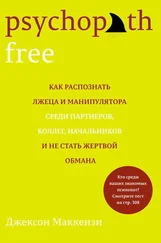Kermode F. Shakespeare’s Language. — Penguin, 2000.
Kirsch I., Montgomery G. Mechanisms of Placebo Pain Reduction: An Empirical Investigation. // Psychological Science, Vol. 7, N. 3, May, 1996.
Koch C. The Quest For Consciousness; A Neurobiological Approach. — Roberts & Company, 2004.
Kuran T. Private Truths, Public Lies: The Social Consequences of Preference Falsification. — Harvard: Harvard University Press, 1997.
Kroeber A.L. The Nature of Culture. — University of Chicago Press, 1952.
Krulwich R. The Secret Advantage of Being Short. // Vermont Public Radio, May 18, 2009.
Kuhn G., Land M. F. There’s more to magic than meets the eye. // Current Biology, 16 (22), 2006. — Р. 950–951.
Landy D. Culture, Disease and Healing. — Collier Macmillan, 1977.
Larkin P. Collected Poems. — Faber and Faber, 2003.
Lee K., Talwar V. Little Liars: Origins of Verbal Deception in Children. // Origins of the Social Mind , Springer, 2006.
Lee K., Talwar V. Punitive Environment Produces Better Young Liars: A Natural Experiment. — Unpublished, 2010.
Lehrer J. Creation on Command. // Seed, May, 2009.
Lehrer J. The Decisive Moment: How The Brain Makes Up Its Mind. — Canon-gate, 2009.
Leites E. Conscience and Casuistry in Early Modern Europe. — Cambridge: Cambridge University Press, 1988.
Leslie I. Arrested Development. // The Times (Eureka), February 4, 2010.
Leslie I . The Honest Truth About Man’s Ability to Lie. // The Times (Eureka ), 5 November 5, 2009.
Levi-Strauss C. The Sorcerer and His Magic, in Structural Anthropology. — Penguin Books, 1977.
Lewis M., Saarni C. Lying and Deception in Everyday Life. — The Guilford Press, 1993.
Leys S. The Analects of Confucius. — W.W Norton & Co., 1998.
Libet B., Gleason C. A., Wright E. W. and Pearl D. K. Time of conscious intention to act in relation to onset of cerebral activity (readiness potential): The unconscious initiation of a freely voluntary act. // Brain, 102, 1983. — P. 623–642.
Lichtenberg P. and Nitzan U. Questionnaire survey on use of placebo. // British Medical Journal, 329: 944, 2004.
Lifton R. J. The Nazi Doctors: Medical Killing and the Psychology of Genocide. — Basic Books, 2000.
Loftus E. F. and Pickrell, J. E . The Formation of False Memories. // Psychiatric Annals 25, December 2005.
Loftus E., et al. Pluto Behaving Badly: False Beliefs and Their Consequences. // American Journal of Psychology, Vol. 121, N. 4, 2008. — P. 643–660.
Loftus E. F., Palmer J. C. Reconstruction of Automobile Destruction: An Example of the Interaction Between Language and Memory. // Journal of Verbal Learning and Verbal Behaviour, Vol. 13, 1974. — Р. 585–589.
Lopez C.-A. Franklin and Mesmer: An Encounter. // Yale Journal of Biology and Medicine. Vol. 66, 1993. — Р. 325–331.
Machiavelli N. The Prince. — Penguin Classics, 2003.
McCullough M. E., et al. Religious involvement and mortality: a meta-analytic review. // Health Psychology, Vol. 19 (3), May, 2000.
McGarry P. Church «lied without lying». // Irish Times, November, 26.
Mitchell R. W. and Thompson N. S (ed.). Deception: Perspectives on Human and Non-human Deceit. — State University of New York Press, 1986.
Montaigne M. The Essays (A Selection) (tr. and ed. M. A Screech). — Penguin Classics, 2004.
Morgan E. S. Benjamin Franklin. — Yale: Yale University Press, 2002.
Mezulis A. H., Abramson L. Y., Hyde J. S. Hankin B. L. Is there a universal positivity bias in attributions? // Psychology Bulletin, 130 (5), September, 2004. — P. 711–747.
Moerman D . Meaning, Medicine, and the Placebo Effect. — Cambridge: Cambridge University Press, 2002.
Morris D. B. The Culture of Pain. — University of California Press, 1993.
Morris D. B . Placebo, Pain and Belief: A Biocultural Model. — Harrington, 1997.
Morris E. Seven Lies About Lying. Parts 1 & 2. // The New York Times, August 5/6, 2009.
Muller S., et al . How do world-class cricket batsmen anticipate a bowler’s intention? // Quarterly Journal of Experimental Psychology, 59 (12), December, 2006. — P. 2162–2186.
Norton M. I. & Ariely D. Self-deception: How we come to believe we are better than we truly are. — Cited in Chance & Norton, 2009.
Nye J. V. C . Lucky Fools and Cautious Businessmen: on Entrepreneurship and the Measurement of Entrepreneurial Failure. // In Joel M. ed. The Vital One: Essays In Honour of Jonathan R. T. Hughes. // Research in Economic History, Vol. 6, 1991. — P. 131–152.
Ofshe R., Watters E. Making Monsters: False Memories, Psychotherapy, and Sexual Hysteria. — University of California Press, 1994.
Olsson J. Wordcrime: Solving Crime Through Forensic Linguistics. — Continuum IPG, 2009.
Onishi K.H., et al. Do 15-Month-Old Infants Understand False Beliefs? // Science Vol. 308, 255, 2005.
Perner J. Understanding the Representational Mind. — MIT Press, 1991.
Person E., et al. On Freud’s «Creative Writers and Day-dreaming». — IPA Publications, 1995.
Pessoa F. The Book of Disquiet (tr. Margaret Jull Costa). — Serpent’s Tail, 2010.
Phillips D. P., Ruth T. E., Wagner L. M. Psychology and Survival. // Lancet, N 6; 342 (8880), 1993. —P. 1142–1145.
Plaskett J. The Millionaire Three. — Retrieved from http://www.themillion-airethree.com.
Plassman H., O’Doherty J., Baba S., Rangel A. Marketing actions can modulate neural representations of experienced pleasantness. // Proceedings of the National Academy of Sciences, 105, 2007. — P. 1050–1054.
Porter S., et al. Negotiating False Memories: Interviewer and Rememberer Characteristics Relate to Memory Distortion. // Psychological Science , Vol. 11, N 6, November, 2000. — P. 507–510.
Postrel V. In Praise of Irrational Exuberance. // Big Questions Online, October 28, 2010.
Читать дальше
Конец ознакомительного отрывка
Купить книгу











